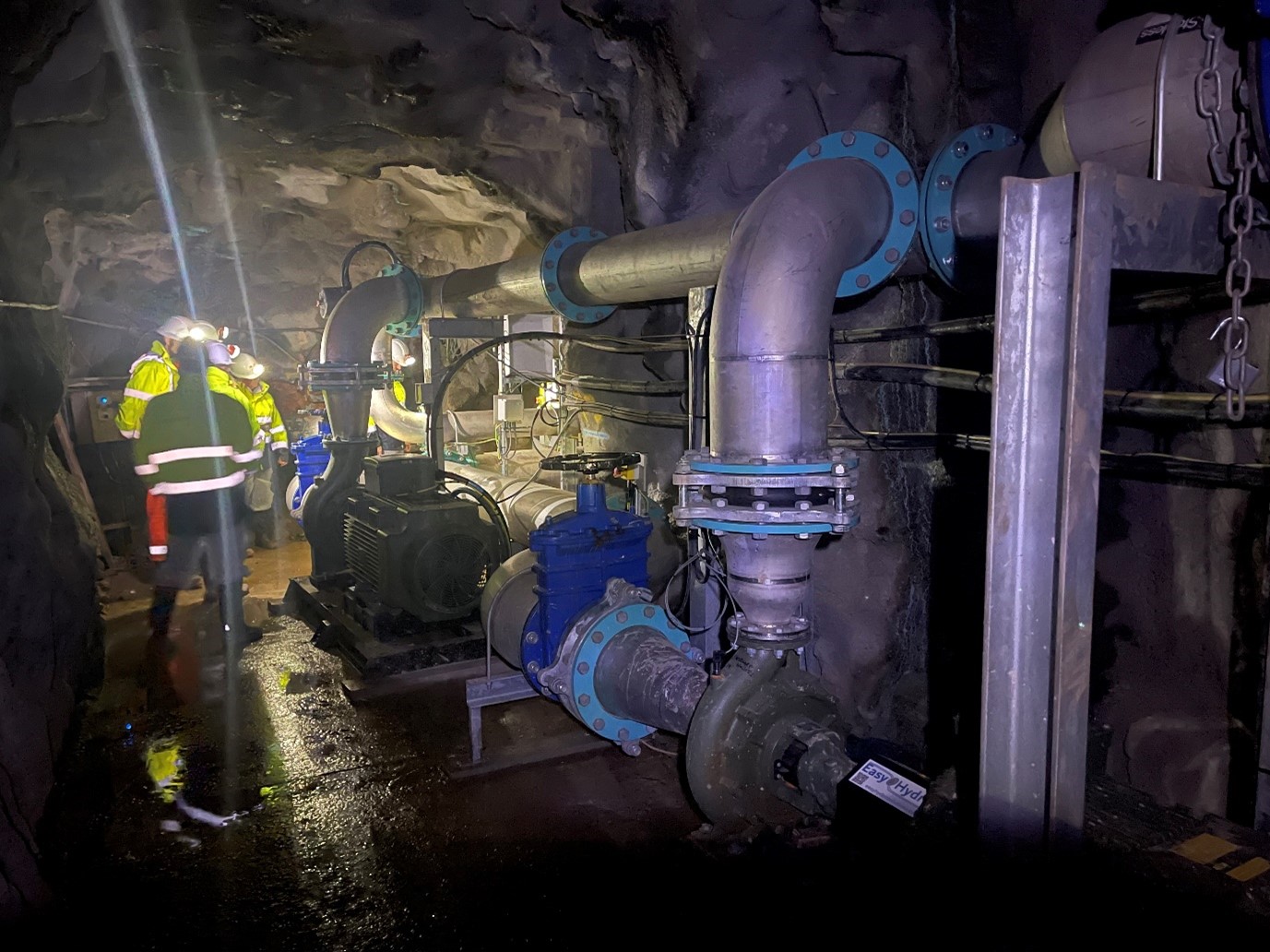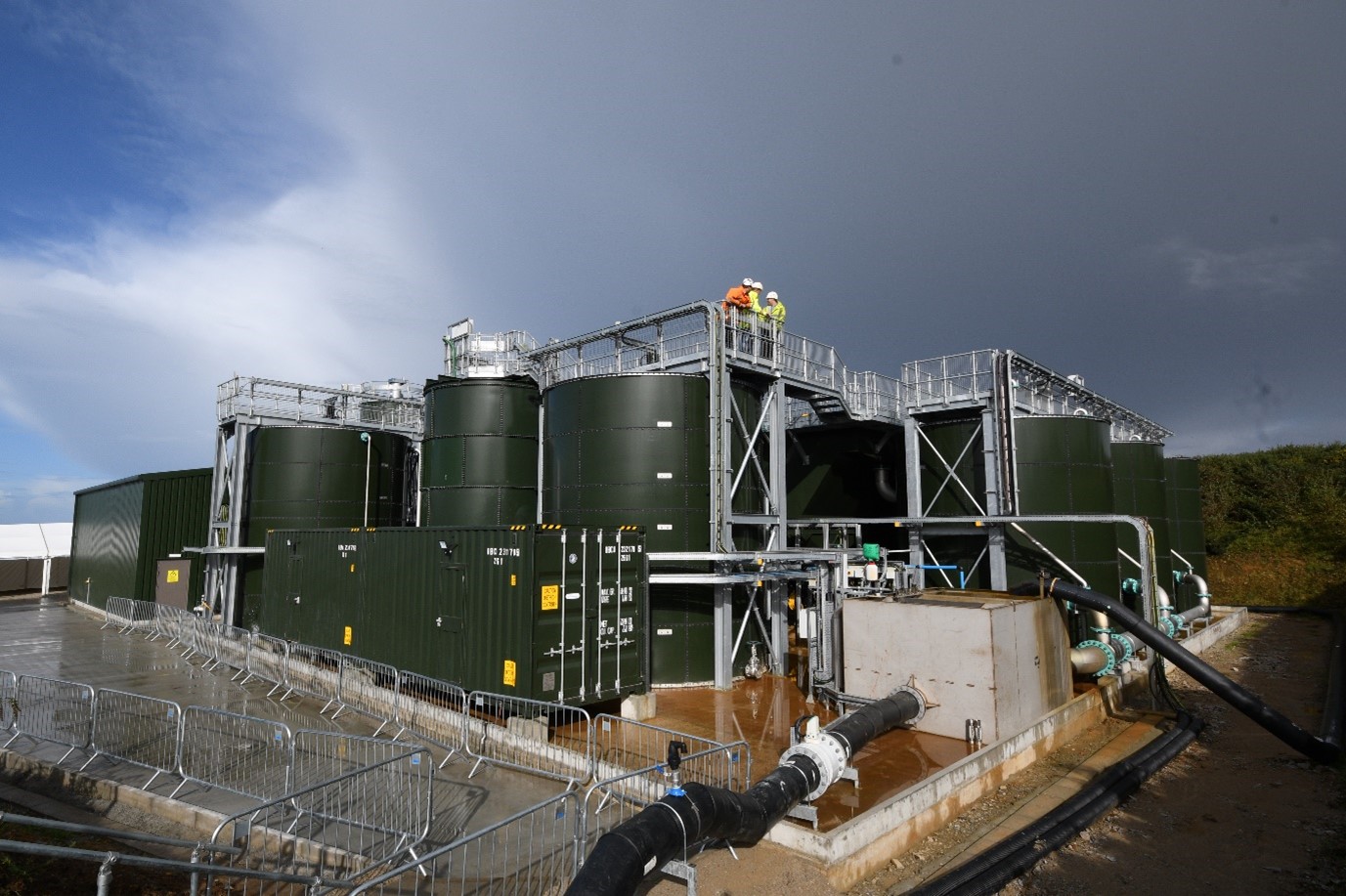In late November, analysts from the International Tin Association’s UK and China offices visited Cornish Metals’ South Crofty tin project in Redruth, Cornwall. The visit encompassed meetings with the mine management team and tours of the underground and surface operations.
The tour began with a presentation about the mining history at South Crofty and in the Camborne-Redruth-Gwennap Mining District, including a schematic of the historical tin and copper workings. Cornish Metals have been pumping up to 25,000 cubic metres of water per day from the mine, with the impermeability of the surrounding killas and granite geology allowing for selective draining of the tin workings while the historical copper workings above remain flooded.
A milestone of this project will be the use of an old pumping platform and reservoir, breaking the vertical distance which water must be pumped. The dewatering is expected to be completed by mid-2025, followed by a Complete Feasibility Study, and production targeted for end-2026.
Historically, mining at South Crofty reached a depth of 750 m without encountering the lower boundary of tin mineralisation. A separate drilling project in the region indicated mineralisation extending to 3.5 km depth. The historical workings at South Crofty provide enough void space for underground deposition of tailings, with no surface tailings storage required.

Underground, our analysts observed a 75 kW hydroturbine, recovering up to 20% of the power consumed by the Water Treatment Plant from discharged water. The ITA saw current refurbishment of the New Cooks Kitchen shaft, the recommissioning of which and the New Roskear shaft has been scheduled.
Analysts saw the newly installed winder adjacent to the New Cooks Kitchen shaft, designed to lower a custom-built cage as a working platform. A secondary egress winder is also being installed.

At the surface, analysts were shown the Mine Water Treatment Plant (MWTP). Waste sludge from the MWTP is transported to the Wheal Jane hazardous waste site, another former tin mine. The company is investigating the prospect of selling treated water to a local reservoir, as well as exploiting the geothermal power potential of the 25 degree C mine water.
Ore dilution is anticipated to be in line with historical estimates at 40%, and X-Ray Transmission and Heavy Liquid Separation ore sorting trials have shown rejection rates of 50% and 55% respectively. Cornish Metals is assessing potential recovery rates, drawing on historical data from South Crofty which achieved an 88% metallurgical recovery rate using Dense Media Separation and a shaking table. A metallurgical drill programme has been completed, with five areas sampled representing production areas in the first six years of the mine life.
We extend our thanks to Cornish Metals for the opportunity to visit their South Crofty tin project and meet the leadership and mine management teams.
Cornish Metals is a member of the ITA’s Explorers & Developers Group.


